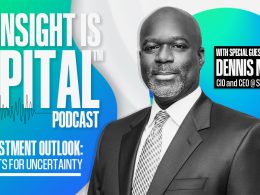If individuals are attempting to increase saving, and Keynesians view this as undesirable, an obvious but underutilized response is to promote productive investment through tax incentives, R&D credits, and other means. Private sector investments are often well-beyond the planning stages, and may provide a quick road to immediate economic activity in response to incentives that move their timing forward. We should not overlook productive forms of government-funded non-profit research. Among those avenues, one might consider restoring funding to the National Institutes of Health and the National Science Foundation, both which have historically been successful in advancing innovation and producing major discoveries in public health and technology.
We might also consider investments that cannot be easily made privately due to coordination failure. Various forms of public infrastructure, particularly those that increase the efficiency of large numbers of individuals (roadways, telecommunications) have been shown to have a good payoff over time in terms of output, relative to the cost of those investments. In contrast, one might view "rural broadband" as somewhat questionable, precisely because of the relatively high cost per beneficiary. In a challenging downturn such as this one, where the duration of economic difficulty may be extended, some amount of infrastructure expense makes sense. In contrast, during most post-war recessions, these have been difficult to coordinate on a timely basis.
In any case, numerous moderate investment-like projects - including infrastructure, research, alternative energy projects, and so forth - are more likely to be effective than massive "pick the winner" approaches, not only because technology is usually too dynamic to pick a winner correctly, but also because the marginal returns from massive expenditure tend to diminish quickly. If the Keynesian problem is increased saving, the natural response should include incentives to initiate real, physical investment and research (not simply tax cuts on investment income). Moreover, projects having the capacity to spread their effects over a large number of beneficiaries should be heavily preferred to projects having a high cost per beneficiary. This should be obvious, but concentrated pork and bridges to nowhere are strikingly common.
Finally, in an economy likely to push 12% unemployment, a compassionate society ought to consider extended - if tapering - unemployment compensation as a necessary "counter-cyclical" element of fiscal policy, at least in my opinion.
In any event, we should be thinking not in terms of brute "stimulus" here, but rather should be thinking in a more nuanced way about incentives, productivity, and resource allocation. Government spending is not one monolithic "G" but is instead comprised of countless projects with very different productivities and long-term consequences. If we abandon all of that subtlety and simply call for government to spend, we can be certain that the spending will benefit those who are best connected to the policy makers doing the spending.
Avoiding a Reprise
Meanwhile, I continue to believe that both Bernanke and Geithner's hands should be tied quickly. If we have learned anything over the past 18 months, it is clear that these bureaucrats can misallocate an enormous quantity of public resources with mind-numbing speed. The diversion of public resources to the bondholders of failing financials - to precisely the worst stewards of capital in society - is not stimulative, but ruthless. A second economic downturn should encourage the repudiation of the policies that Bernanke and Geithner pursued during the first.













